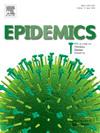罗马尼亚西北部不同水生基质中抗生素耐药肠杆菌分离株的流行病学和环境风险
IF 2.4
3区 医学
Q2 INFECTIOUS DISEASES
引用次数: 0
摘要
具有抗生素抗性细菌的最具威胁性的环境污染源是人类活动产生的污水。即使实施了废水处理过程,传统方法也不能完全保留抗生素耐药性决定因素。我们建议进行抗生素耐药风险评估,包括不同环境区室中ARB、ARGs和MGEs的特征。对678株肠杆菌进行药敏试验,发现对红霉素耐药程度增加(77.9% %),对氨苄西林耐药程度高(39.7% %),对碳青霉烯类耐药频率低(2.36 %),耐多药菌株比例为34.4% %。最常见的耐药决定因素是blatem1(26.5% %)和tetA(8.26% %),而intI1基因在7.37% %的分离株中发现。从不同污染程度的水生基质中鉴定出耐药肠杆菌为Citrobacter spp (n = 46)、Enterobacter spp (n = 35)、Klebsiella spp (n = 54)和Escherichia coli (n = 107)。耐药肠杆菌中intI1的存在与ARG指数(0.768)有较强的统计学相关性,但在不同的环境基质中,特别是在直接受人源性细菌影响的环境基质中,未观察到明显的菌群聚集性。从分类上看,arg的分布格局和多样性是稳定的。基于ERIC-PCR图谱的树形图分析证实,在非亲缘关系的水生生态系统中存在具有相同DNA指纹的菌株。耐药柠檬酸杆菌、肠杆菌、克雷伯氏菌和埃希氏菌分离株的流行病学证实了具有人类健康意义的菌株的广泛迁移和环境分散,对水资源尤其重要。本文章由计算机程序翻译,如有差异,请以英文原文为准。
Epidemiology and environmental risks of antibiotic resistant Enterobacterales isolates in different aquatic matrices from North-Western Romania
The most menacing sources of environmental contamination with antibiotic resistant bacteria are effluents derived from anthropic activities. Even when wastewater treatment processes are implemented, conventional methods are not able to completely retain the antibiotic resistance determinants. We propose an antibiotic resistance risk assessment, incorporating the characterisation of ARB, ARGs and MGEs in different environmental compartments.
Antibiotic susceptibility testing of 678 Enterobacterales isolates revealed an increased degree of intrinsic resistance to erythromycin (77.9 %), high level of resistance to ampicillin (39.7 %), low frequency of carbapenem resistance (2.36 %), and a percentage of 34.4 % MDR strains. The most frequent resistance determinants were blaTEM-1 (26.5 %) and tetA (8.26 %), while the intI1 gene was found in 7.37 % of isolates. Resistant Enterobacterales from aquatic matrices with different degrees of contamination were identified as Citrobacter spp. (n = 46), Enterobacter spp. (n = 35), Klebsiella spp. (n = 54) and Escherichia coli (n = 107). A strong statistical correlation was observed between the presence of intI1 and the ARG index (0.768) in resistant Enterobacter spp.
Distinct clustering of strains was not observed across different environmental matrices, especially in those directly impacted by human-derived bacteria. Also, distribution of ARB patterns and diversity of ARGs was stable from the taxonomic perspective. Dendrogram analysis based on ERIC-PCR profiles confirmed the presence of strains with identical DNA fingerprints in non-related aquatic ecosystems. The epidemiology of resistant Citrobacter, Enterobacter, Klebsiella and Escherichia isolates confirmed an extensive migration and environmental dispersion of strains with human health significance, particularly important for water resources.
求助全文
通过发布文献求助,成功后即可免费获取论文全文。
去求助
来源期刊

Epidemics
INFECTIOUS DISEASES-
CiteScore
6.00
自引率
7.90%
发文量
92
审稿时长
140 days
期刊介绍:
Epidemics publishes papers on infectious disease dynamics in the broadest sense. Its scope covers both within-host dynamics of infectious agents and dynamics at the population level, particularly the interaction between the two. Areas of emphasis include: spread, transmission, persistence, implications and population dynamics of infectious diseases; population and public health as well as policy aspects of control and prevention; dynamics at the individual level; interaction with the environment, ecology and evolution of infectious diseases, as well as population genetics of infectious agents.
 求助内容:
求助内容: 应助结果提醒方式:
应助结果提醒方式:


